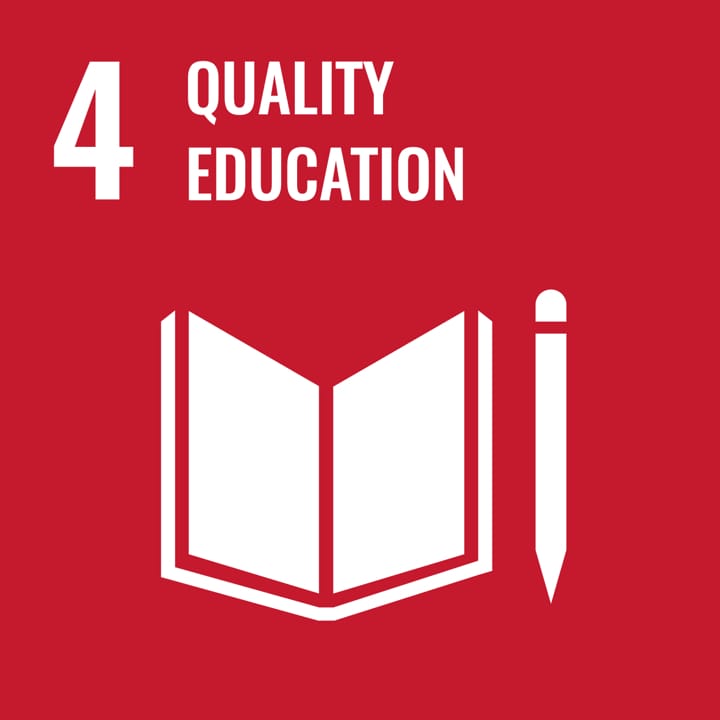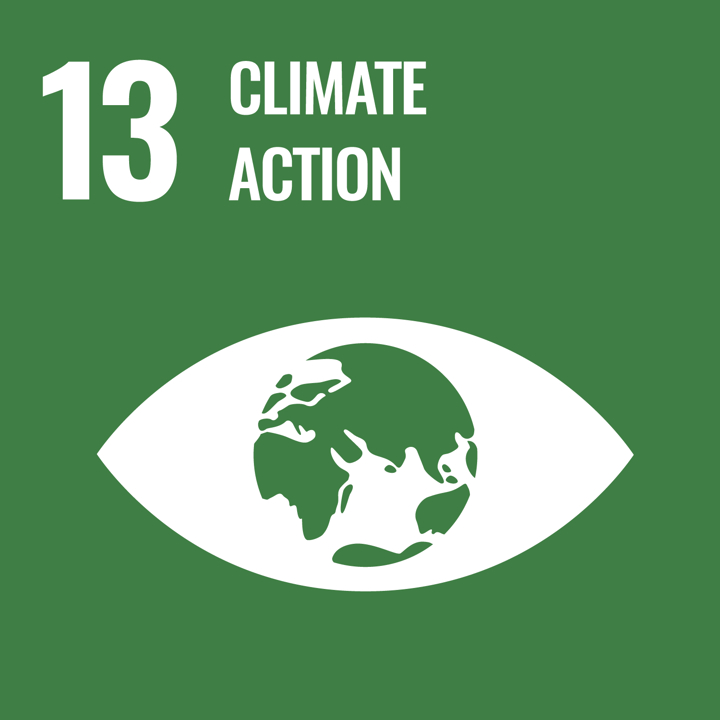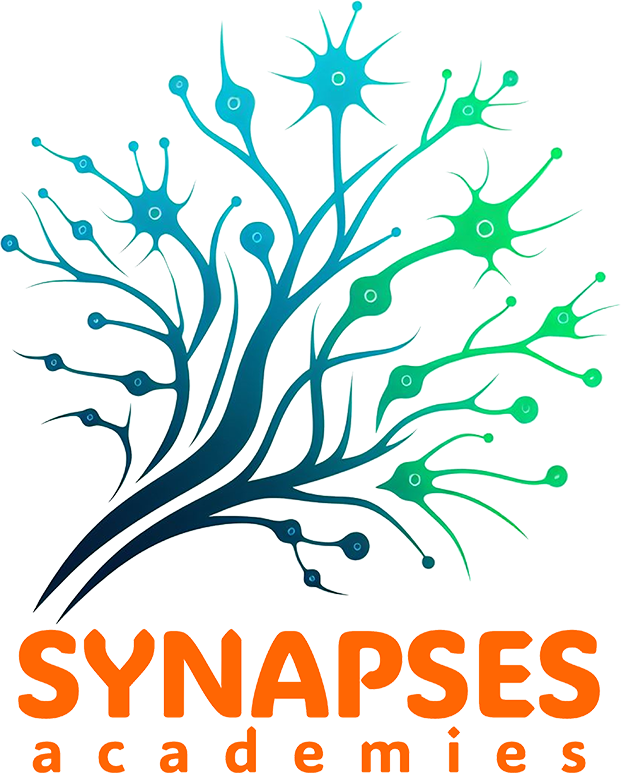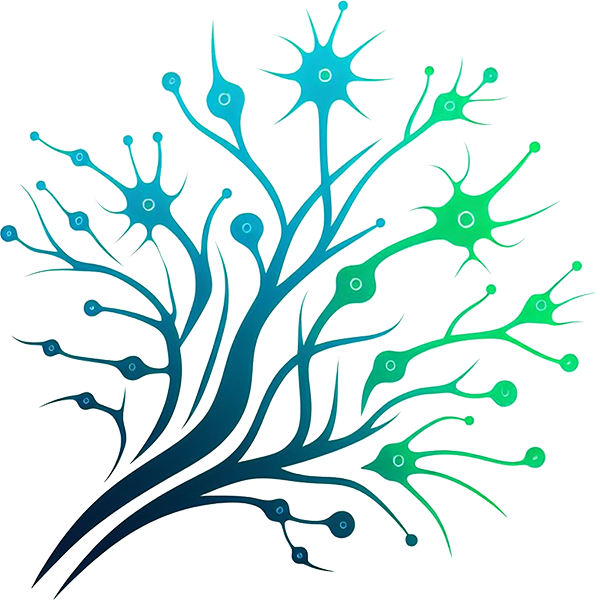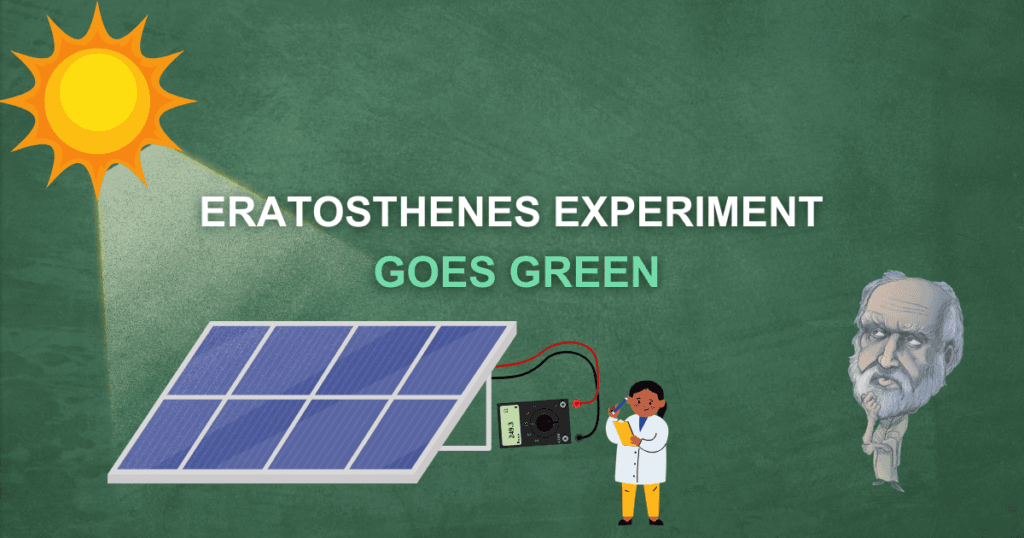
Beoogde eindgebruiker: Leraar, Lerarenopleider
Leeftijdsgroep: Lager secundair; Hoger secundair
Schoolcurriculum: Maths; Science; Social & Environment Science; Languages; Applied Science
Thema's en onderwerpen: Energy Use and Production; Collective Action; Environmental Change; Futures Thinking; Information & Knowledge; Pedagogy Approaches
Duur: Approximately 4 teaching hours
Type bron: Experiment, Lesplannen
Trefwoorden: Solar Panels, Equinox, Energy, Latitude, Sustainability
Talen: English, Greek
Beschrijving
Over 2,400 years ago, Eratosthenes measured Earth’s circumference using geometry, shadows, and observations. Today, students replicate this method by using solar panels to measure the Sun’s angle at noon, optimizing panel tilt for maximum solar efficiency. This activity combines geography, physics, and sustainability while fostering teamwork and critical thinking. Through data collection and analysis, participants explore Earth’s curvature, solar energy principles, and their practical applications.
The activity encourages critical thinking about renewable energy and human impact on Earth’s climate. Students use real-world tools like multimeters and collaborate to calculate results. This engaging experience supports the development of scientific literacy and environmental awareness.
Hoe gebruik je deze bron
In this activity, the teacher begins by introducing students to Eratosthenes’ experiment, explaining how he measured the Earth’s circumference using shadows and geometry. Next, the teacher provides a brief overview of how solar panels work, focusing on how sunlight is converted into electrical energy.
In the following lesson, which should be scheduled during the equinox, students use a solar panel and a multimeter to measure the panel’s voltage and current. Through hands-on experimentation, they explore how different panel inclinations affect solar power output, discovering the relationship between solar angles, energy efficiency, and the Earth’s latitude.
The activity concludes with a reflection and discussion about the findings, supported by worksheets and a short assessment to consolidate learning.
De middelen
You will find the Eratosthenes Goes Green experience here:
Leerresultaten
- een reeks geschikte hulpmiddelen en kaders toepassen om duurzaam burgerschap bij studenten te bevorderen
- Samen de kennis, hulpmiddelen en kaders synthetiseren om onderwijsmateriaal en lesplannen te maken die zijn aangepast aan hun eigen lokale context.
- Beoordelingscriteria ontwikkelen en toepassen om Duurzaamheidsburgerschap bij studenten te evalueren.
- Door middel van workshopactiviteiten en praktijkgemeenschappen capaciteit en agency opbouwen als docenten en leiders op het gebied van duurzaam burgerschap.
Groene competenties
- Complexiteit omarmen in duurzaamheid: Systeemdenken; kritisch denken; probleemopstelling
- Duurzame toekomstvisies: Aanpassingsvermogen; Onderzoekend denken
- Handelen voor duurzaamheid: Collectieve actie
Creative Commons

This resource has been created by Ellinogermaniki Agogi and has been shared to SYNAPSES Academy under written permission.
SDG's
